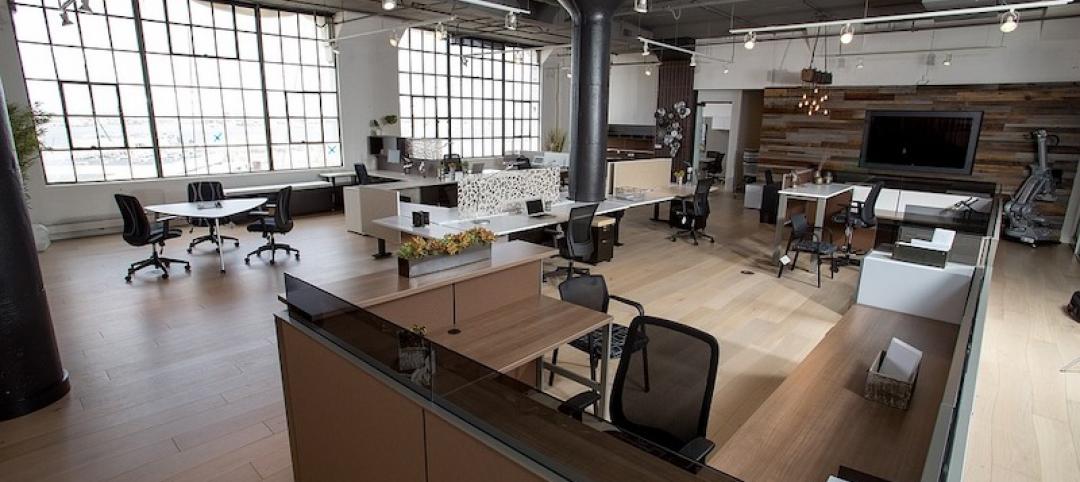Thirty-eight states and the District of Columbia added construction jobs between April 2017 and April 2018, while 29 states added construction jobs between March and April, according to an analysis by the Associated General Contractors of America of Labor Department data released today. Association officials said the employment growth likely would have been higher if firms could find more qualified workers to hire.
"Firms in many parts of the country are working to keep pace with growing demand for construction services," said chief economist Ken Simonson. "Many of those firms are having a hard time finding and hiring enough qualified workers as the pool of available workers remains very tight."
California added the most construction jobs (59,500 jobs, 7.4%) during the past year. Other states adding a large number of new construction jobs for the past 12 months include Texas (40,600 jobs, 5.7%); Florida (34,900 jobs, 7.0%); Georgia (13,900 jobs, 7.6%) and Arizona (11,700 jobs, 8.2%). West Virginia (11.6%, 3,500 jobs) added the highest percentage of new construction jobs during the past year, followed by Nevada (9.8 percent, 8,200 jobs); Arizona; Utah (8.1%, 7,700 jobs) and Idaho (7.9%, 3,500 jobs).
Eleven states shed construction jobs between April 2017 and April 2018 while construction employment was unchanged in Montana. North Dakota lost the highest total and percentage of construction jobs (-4,900 jobs, -17.0%), followed by Iowa (-2,500 jobs, -3.2%); Missouri (-1,500 jobs, -1.2%); South Carolina (-1,400 jobs, -1.4%) and Nebraska (-1,100 jobs, -2.1%). In addition to North Dakota, other states that lost a high percentage of construction jobs for the month included South Dakota (-3.3%, -800 jobs); Iowa; Nebraska and Hawaii (-1.9%, -700 jobs).
Twenty-nine states added construction jobs between March and April. California added the most (10,000 jobs, 1.2%), followed by Texas (4,100 jobs, 0.6%); Louisiana (2,200 jobs, 1.5%); Georgia (2,100 jobs, 1.1%) and Washington (2,100 jobs, 1.0%). Louisiana added the highest percentage of construction jobs for the month, followed by Kentucky (1.4%, 1,100 jobs); New Hampshire (1.4%, 400 jobs); Alaska (1.3%, 200 jobs) and Vermont (1.3%, 200 jobs). Employment set an all-time high in Texas.
Nineteen states lost construction jobs from March to April, while construction employment was unchanged in Mississippi, Montana and the District of Columbia. Indiana lost the most construction jobs for the month (-2,300 jobs, -1.6%), followed by Wisconsin (-2,000 jobs, -1.6%); South Carolina (-1,300 jobs, -1.3%); Massachusetts (-1,300 jobs, -0.8%) and Michigan (-1,100 jobs, -0.6%). North Dakota lost the highest percentage of construction jobs (-2.8%, -700 jobs), followed by Delaware (-1.7%, -400 jobs); Wisconsin; Indiana; South Carolina and South Dakota (-1.3%, -300 jobs).
Association officials said strong demand, particularly from the private-sector, was prompting firms in most states to add staff. But they cautioned that relatively few young workers appear to be entering the construction industry. They said the strong economy was increasing competition for most workers and construction recruiting is hampered by the fact relatively few schools offer instruction in construction skills or counsel students to consider high-paying construction careers.
"The collective cultural fixation on urging every student to go to college and seek office jobs means relatively few young adults are ever encouraged to consider careers in construction," said Stephen E. Sandherr, the association's chief executive officer. View the state employment data by rank, state, and peak. View the state employment map.
Related Stories
Market Data | Aug 21, 2019
Architecture Billings Index continues its streak of soft readings
Decline in new design contracts suggests volatility in design activity to persist.
Market Data | Aug 19, 2019
Multifamily market sustains positive cycle
Year-over-year growth tops 3% for 13th month. Will the economy stifle momentum?
Market Data | Aug 16, 2019
Students say unclean restrooms impact their perception of the school
The findings are part of Bradley Corporation’s Healthy Hand Washing Survey.
Market Data | Aug 12, 2019
Mid-year economic outlook for nonresidential construction: Expansion continues, but vulnerabilities pile up
Emerging weakness in business investment has been hinting at softening outlays.
Market Data | Aug 7, 2019
National office vacancy holds steady at 9.7% in slowing but disciplined market
Average asking rental rate posts 4.2% annual growth.
Market Data | Aug 1, 2019
Nonresidential construction spending slows in June, remains elevated
Among the 16 nonresidential construction spending categories tracked by the Census Bureau, seven experienced increases in monthly spending.
Market Data | Jul 31, 2019
For the second quarter of 2019, the U.S. hotel construction pipeline continued its year-over-year growth spurt
The growth spurt continued even as business investment declined for the first time since 2016.
Market Data | Jul 23, 2019
Despite signals of impending declines, continued growth in nonresidential construction is expected through 2020
AIA’s latest Consensus Construction Forecast predicts growth.
Market Data | Jul 20, 2019
Construction costs continued to rise in second quarter
Labor availability is a big factor in that inflation, according to Rider Levett Bucknall report.
Market Data | Jul 18, 2019
Construction contractors remain confident as summer begins
Contractors were slightly less upbeat regarding profit margins and staffing levels compared to April.
















